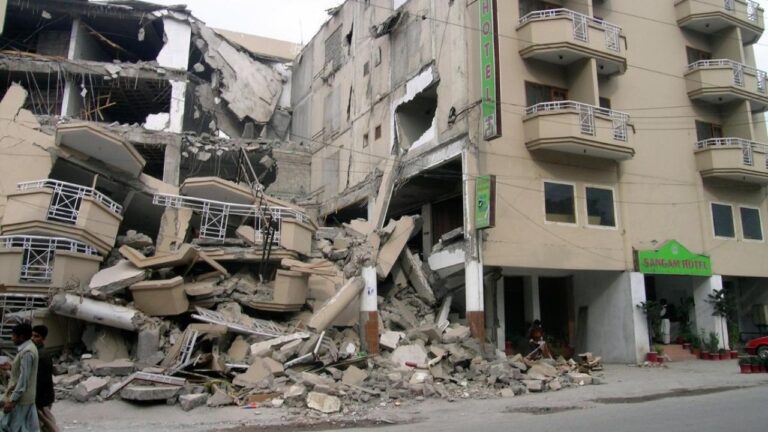
The Path That Ends AIDS: UNAIDS Report Reveals Progress and Challenges in the Global Fight Against HIV/AIDS (Credit: UNAIDS)
In a recent report titled “The Path That Ends AIDS,” the Joint United Nations Programme on HIV/AIDS (UNAIDS) sheds light on the remarkable progress made in combating Acquired Immunodeficiency Syndrome (AIDS) and human immunodeficiency virus (HIV). The UNAIDS report also highlights the ongoing challenges that the world faces in the fight against this devastating pandemic. As we look at the report’s key features and findings, it becomes clear that although significant progress has been made, much remains to be done to ensure access to treatment, address inequities, tackle stigma and discrimination, and secure adequate funding. Concerted efforts are still needed.
Table of Contents
Key Highlights of the UNAIDS Report
1. AIDS-Related Deaths and Access to Treatment
In 2022, AIDS claimed a life every minute, highlighting the urgency of addressing the HIV epidemic. Shockingly, approximately 9.2 million people living with HIV worldwide lacked access to life-saving treatment in the same year. Even among the 2.1 million individuals receiving treatment, many were not virally suppressed, indicating the need for improved treatment management and support.
2. Treatment Progress and Global Targets
On a more positive note, the UNAIDS report indicates that 29.8 million out of the 39 million people living with HIV globally are currently receiving life-saving treatment. Between 2020 and 2022, an impressive 1.6 million additional people received HIV treatment each year. Moreover, the global target of 35 million people receiving HIV treatment by 2025 appears attainable if the current progress is sustained.
3. Slow Treatment Progress in Certain Regions
Despite progress in many parts of the world, regions such as Eastern Europe, Central Asia, the Middle East, and North Africa exhibited slower treatment progress. Alarmingly, only around half of the over two million people living with HIV in these regions received antiretroviral therapy in 2022. Urgent action is required to accelerate treatment efforts in these underserved areas.
4. Gender Discrimination and Treatment Rates
Gender discrimination continues to pose a significant barrier to equal access to HIV treatment. Men living with HIV in sub-Saharan Africa, the Caribbean, Eastern Europe, and Central Asia are less likely to receive treatment compared to women. Addressing this disparity is crucial to ensuring that everyone has equal access to life-saving medications.
5. Impact on Children
The UNAIDS report provides both hope and concern regarding the impact of HIV on children. While AIDS-related deaths among children reduced by an impressive 64% from 2010 to 2022, approximately 84,000 children still lost their lives to HIV in 2022. Furthermore, around 43% of the 1.5 million children living with HIV did not receive treatment in the same year. Ensuring access to treatment and prevention programs for children remains a critical focus.
6. Challenges in HIV Prevention
Prevention efforts are vital in curbing the spread of HIV. The UNAIDS report highlights that women and girls accounted for a concerning 63% of all new HIV infections in sub-Saharan Africa. However, only about 42% of districts with high HIV incidence in the region had dedicated prevention programs. Enhanced prevention strategies are needed to bridge this gap and protect vulnerable populations.
7. Funding Gaps
Insufficient funding remains a significant challenge in the fight against HIV/AIDS. Although increased prevention funding led to a decline in HIV incidence in some regions, Eastern Europe, Central Asia, the Middle East, and North Africa continue to face HIV epidemics due to a lack of financial resources. In 2022, the available funding of USD 20.8 billion fell short of the USD 29.3 billion required by 2025, creating a critical funding gap.
8. Fluctuating Funding Levels
Over the years, funding for HIV programs has experienced fluctuations. While the early 2010s witnessed substantial increases in funding, it has since regressed to 2013 levels. In 2022, there was a concerning 2.6% drop in funding compared to the previous year, hindering progress in combating the epidemic.

UNAIDS: Leading the Global Effort to End AIDS
The Joint United Nations Programme on HIV/AIDS (UNAIDS) was established in 1996 and has since been at the forefront of the global effort to end AIDS as a public health threat by 2030, as part of the Sustainable Development Goals. Guided by a vision of zero new HIV infections, zero discrimination, and zero AIDS-related deaths, UNAIDS aims to leave no one behind in this critical mission.
Understanding AIDS Disease: A Persistent Global Challenge
AIDS is a chronic, potentially life-threatening health condition caused by HIV, which severely weakens the body’s immune system. Transmitted through certain body fluids, including blood and semen, HIV attacks CD4 cells, crucial components of the immune system that detect and fight infections. Unfortunately, once HIV enters the body, it remains there indefinitely.
India’s Initiatives to Curb AIDS Disease
India has made significant strides in combating HIV/AIDS through various initiatives:
1. HIV and AIDS (Prevention and Control) Act, 2017
The enactment of this act empowers the central and state governments in India to take effective measures to prevent the spread of HIV/AIDS.
2. Access to Antiretroviral Therapy (ART)
India has made Antiretroviral Therapy (ART) affordable and accessible to over 90% of people living with HIV globally, ensuring they receive life-saving treatment.
3. Memorandum of Understanding (MoU)
The Ministry of Health and Family Welfare signed an MoU with the Ministry of Social Justice and Empowerment to enhance HIV/AIDS outreach and reduce social stigma and discrimination against victims of drug abuse and People Living with HIV/AIDS.
4. Project Sunrise
Launched in 2016 by the Ministry of Health and Family Welfare, Project Sunrise aims to tackle the rising HIV prevalence in the northeastern states of India, particularly among people injecting drugs.
Towards Ending AIDS: A Global Opportunity and Responsibility
The latest UNAIDS report shows that ending AIDS is within our reach if we continue to make the right choices and invest in the fight against HIV. Countries like Botswana, Eswatini, Rwanda, Tanzania, and Zimbabwe have already achieved impressive targets, proving that progress is possible with sufficient resources and leadership.
However, challenges persist, especially in regions with slow treatment progress and inadequate prevention efforts. Addressing gender discrimination, protecting human rights, and eliminating punitive laws are vital steps towards ending AIDS for good.
Moreover, funding remains a critical factor in achieving our goals. Countries and leaders need to invest adequately in HIV programs to make substantial progress and save millions of lives.
As we move forward, it is crucial to learn from the success stories and strengthen our efforts to ensure that no one is left behind in the fight against HIV/AIDS. Together, we can make history by putting an end to the world’s deadliest pandemic and creating a brighter, healthier future for all.
Watch: AIDS 101






